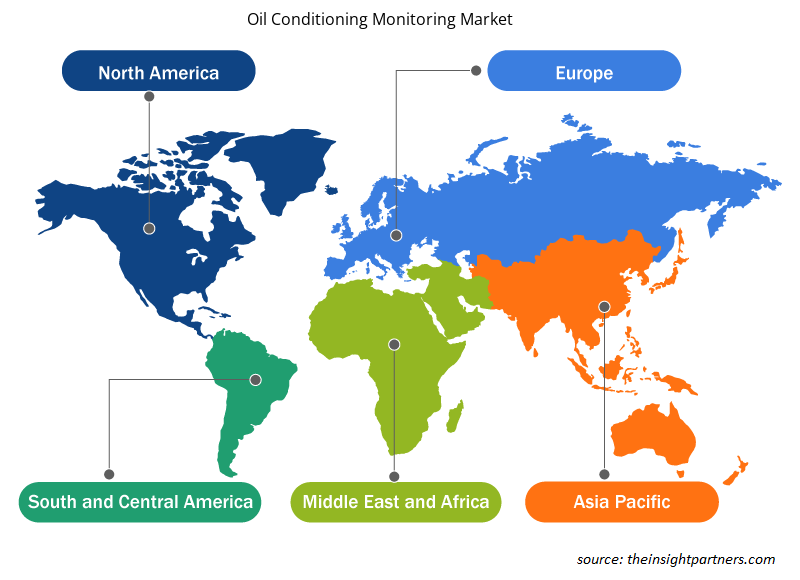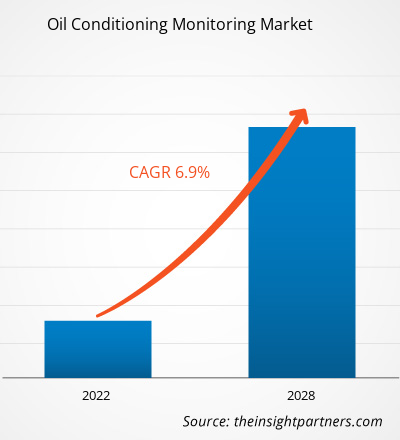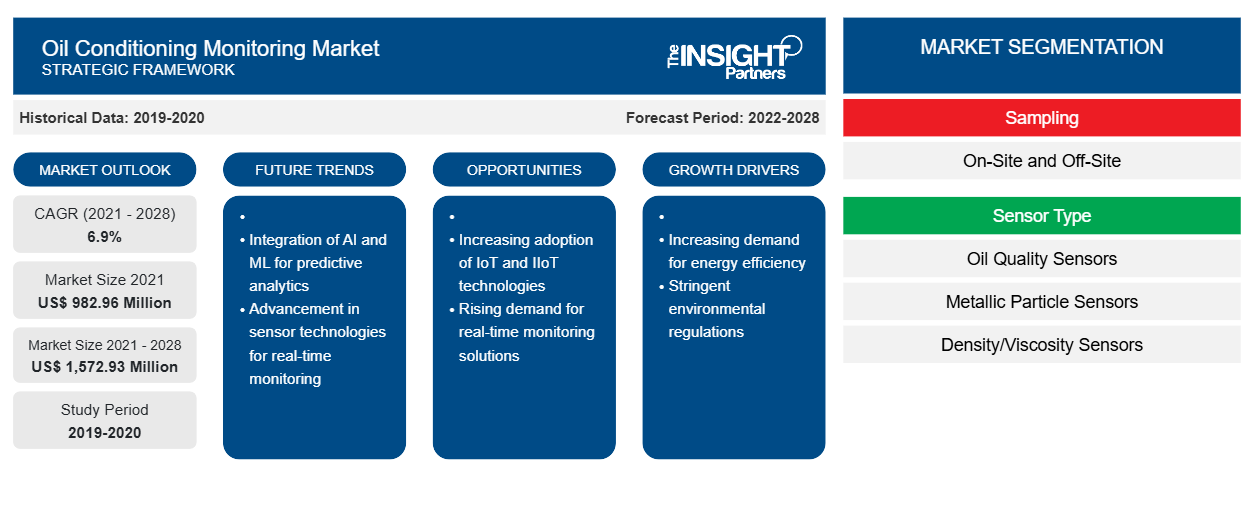من المتوقع أن ينمو سوق مراقبة معالجة الزيت من 982.96 مليون دولار أمريكي في عام 2021 إلى 1،572.93 مليون دولار أمريكي بحلول عام 2028؛ ومن المتوقع أن ينمو بمعدل نمو سنوي مركب قدره 6.9٪ خلال الفترة 2021-2028.
إن استخدام إنترنت الأشياء الصناعي يقلل من التأثير البيئي لصناعات النفط والغاز بشكل كبير، من زيادة الكفاءة إلى تقليل مخاطر السلامة وتقليل السفر. تولي شركات النفط والغاز اهتمامًا بإنترنت الأشياء الصناعي لأنه يمكن أن يساعدها في توفير الطاقة وتجنب الانسكابات النفطية والكوارث الأخرى وانبعاث كميات أقل من الكربون. قد يراقب إنترنت الأشياء الصناعي أيضًا استهلاك الطاقة والموارد. تؤثر التقنيات الذكية عمليًا على كل مجال من مجالات سلسلة توريد النفط والغاز، من العمليات إلى تفاعل المستهلك. تمنح الأجهزة الذكية في سلسلة التوريد صناعة النفط والغاز فرصة للتنافس في عالم سلعي، فضلاً عن فرصة للتحديث بسرعة في قطاع قديم. بالإضافة إلى ذلك، فإن إنترنت الأشياء لديه القدرة على تحسين طرق جمع البيانات بشكل كبير. يقدر قطاع النفط والغاز الكفاءة والدقة أكثر من أي صناعة أخرى تقريبًا.
قم بتخصيص هذا التقرير ليناسب متطلباتك
ستحصل على تخصيص لأي تقرير - مجانًا - بما في ذلك أجزاء من هذا التقرير، أو تحليل على مستوى الدولة، وحزمة بيانات Excel، بالإضافة إلى الاستفادة من العروض والخصومات الرائعة للشركات الناشئة والجامعات
- احصل على أهم اتجاهات السوق الرئيسية لهذا التقرير.ستتضمن هذه العينة المجانية تحليلاً للبيانات، بدءًا من اتجاهات السوق وحتى التقديرات والتوقعات.
تأثير جائحة كوفيد-19 على سوق مراقبة معالجة الزيت
لقد هز وباء كوفيد-19 العديد من الصناعات في جميع أنحاء العالم. أعاق الإغلاق عمليات العديد من الصناعات، بما في ذلك التصنيع وتكنولوجيا المعلومات. ومع ذلك، كان على الصناعات الأساسية مثل السلع الاستهلاكية سريعة الحركة والأدوية مواصلة عملياتها. يمر قطاع النفط بثالث انهيار للأسعار في الأشهر الاثني عشر الماضية. تعافت الصناعة بعد أول صدمتين، واستؤنفت الأعمال كالمعتاد. لكن هذه المرة، الأمور مختلفة. يشمل الوضع الحالي صدمة في العرض، وطلب منخفض تاريخيًا، وكارثة إنسانية عالمية. علاوة على ذلك، فإن الصحة المالية والبنيوية للقطاع أسوأ مما كانت عليه في الأزمات السابقة. وقد عُزيت العائدات الضعيفة إلى إدخال الصخر الزيتي، والإنتاج الزائد، وأسواق التمويل الليبرالية التي تجاهلت الافتقار إلى الانضباط الرأسمالي. مع اقتراب الأسعار من أدنى مستوياتها في 30 عامًا وزيادة الضغط العام، أدرك القادة أن التغيير أمر لا مفر منه. تتفاقم مشكلة كوفيد-19. لذلك، فإن وباء كوفيد-19 وتداعياته يخلفان دمارًا في سوق مراقبة تكييف النفط.
رؤى حول سوق مراقبة تكييف الزيت
الطلب المتزايد على توليد الطاقة في جميع أنحاء العالم يغذي نمو سوق مراقبة معالجة النفط
من المتوقع أن يزداد استهلاك الطاقة في جميع أنحاء العالم في السنوات القادمة، حيث يصل الاستخدام السنوي إلى حوالي 778 إيتا جول بحلول عام 2035 بسبب الزيادة المتوقعة في عدد السكان العالمي والنمو الاقتصادي والصناعي في الدول النامية، مثل الصين والهند. يبحث مصممو ومصنعو الآلات الصناعية وغيرها من المعدات باستمرار عن طرق لتحسين كفاءة استخدام الطاقة لمنتجاتهم من خلال تقليل خسائر التدفئة والتبريد، وتحسين نقل الحرارة، وتحسين المحركات الكهربائية. تظل الطاقة النووية ضرورية بسبب عوامل مثل ضرورة توفير الكهرباء الموثوقة والأساسية، وتهديد تغير المناخ العالمي. علاوة على ذلك، تعد الطاقة النووية عنصرًا أساسيًا في استراتيجية الطاقة لأنها المصدر الوحيد واسع النطاق للكهرباء الخالية من الكربون تقريبًا. تنتج حوالي 20٪ من الطاقة العالمية وأكثر من 60٪ من الطاقة المنخفضة الكربون. ظهرت محطات الطاقة النووية كمصدر للطاقة لتلبية الطلب المتزايد على الكهرباء. وتواجه المحطات مشكلة دورة الوقود النووي، وفي نهاية المطاف إيقاف تشغيل هذه المرافق كجزء من دورة حياتها أو في حالة وقوع كارثة طبيعية أو من صنع الإنسان، وهو ما يدفع الطلب على مراقبة معالجة النفط في المرافق.
رؤى السوق القائمة على أخذ العينات
بناءً على أخذ العينات، يتم تقسيم سوق مراقبة معالجة الزيت العالمية إلى داخل الموقع وخارجه. في عام 2020، قاد قطاع خارج الموقع قطاع مراقبة معالجة الزيت حيث استحوذ على حصة أكبر في السوق.
رؤى السوق المستندة إلى نوع المستشعرات
بناءً على نوع المستشعر، يتم تقسيم سوق مراقبة معالجة الزيت إلى مستشعرات جودة الزيت ومستشعرات الجسيمات المعدنية ومستشعرات الكثافة/اللزوجة. في عام 2020، قاد قطاع مستشعر جودة الزيت قطاع مراقبة معالجة الزيت واستحوذ على أكبر حصة في السوق.
رؤى السوق القائمة على المنتج
بناءً على المنتج، يتم تقسيم سوق مراقبة معالجة الزيت إلى توربينات وضواغط ومحركات وأنظمة تروس وأنظمة هيدروليكية. في عام 2020، قاد قطاع التوربينات قطاع مراقبة معالجة الزيت واستحوذ على أكبر حصة في السوق.
رؤى السوق القائمة على القياس
بناءً على القياس، يتم تقسيم سوق مراقبة معالجة الزيت إلى درجة الحرارة والضغط والكثافة واللزوجة والعزل الكهربائي وTAN/TBN وتخفيف الماء وتخفيف الوقود والسخام وجزيئات التآكل. في عام 2020، قاد قطاع اللزوجة قطاع مراقبة معالجة الزيت واستحوذ على أكبر حصة في السوق.
رؤى السوق القائمة على الصناعة
بناءً على الصناعة، يتم تقسيم سوق مراقبة معالجة الزيت إلى النقل والصناعة والنفط والغاز والطاقة والكهرباء والتعدين. في عام 2020، قاد قطاع النقل قطاع مراقبة معالجة الزيت واستحوذ على أكبر حصة في السوق.
يتبنى اللاعبون العاملون في سوق مراقبة معالجة الزيت استراتيجيات مثل عمليات الدمج والاستحواذ ومبادرات السوق للحفاظ على مواقعهم في السوق. فيما يلي قائمة ببعض التطورات التي قام بها اللاعبون الرئيسيون:
- في أغسطس 2020، بدأت ALS تعاونًا استراتيجيًا مع Poseidon Systems، وهي شركة مقرها روتشستر تعمل على تطوير حلول مراقبة حالة الزيت عبر الإنترنت المتقدمة (OCM). لدى الشركتين هدف مشترك يتمثل في تحويل OCM من خلال الجمع بين تقنية OCM عبر الإنترنت الحائزة على جوائز من Poseidon Systems وخبرة ALS في تحليل واختبار الزيت.
- في أغسطس 2020، أعلنت شركة Des-Case Corporation، وهي شركة عالمية لتصنيع منتجات الترشيح المتخصصة التي تعمل على تحسين موثوقية معدات العمليات وإطالة عمر مواد التشحيم، عن إطلاق خطة اشتراك جديدة لمراقبة التشخيص عن بعد للأصول الصناعية المزيتة، مما يمنح العملاء راحة البال من أن صحة مواد التشحيم ونظافتها والرطوبة داخل أصولهم الحيوية تتم مراقبتها في الوقت الفعلي.
رؤى إقليمية حول سوق مراقبة تكييف الزيت
لقد قام المحللون في Insight Partners بشرح الاتجاهات والعوامل الإقليمية المؤثرة على سوق مراقبة تكييف الزيت طوال فترة التوقعات بشكل شامل. يناقش هذا القسم أيضًا قطاعات سوق مراقبة تكييف الزيت والجغرافيا في جميع أنحاء أمريكا الشمالية وأوروبا ومنطقة آسيا والمحيط الهادئ والشرق الأوسط وأفريقيا وأمريكا الجنوبية والوسطى.

- احصل على البيانات الإقليمية المحددة لسوق مراقبة معالجة الزيت
نطاق تقرير سوق مراقبة تكييف الزيت
| سمة التقرير | تفاصيل |
|---|---|
| حجم السوق في عام 2021 | 982.96 مليون دولار أمريكي |
| حجم السوق بحلول عام 2028 | 1,572.93 مليون دولار أمريكي |
| معدل النمو السنوي المركب العالمي (2021 - 2028) | 6.9% |
| البيانات التاريخية | 2019-2020 |
| فترة التنبؤ | 2022-2028 |
| القطاعات المغطاة | عن طريق أخذ العينات
|
| المناطق والدول المغطاة | أمريكا الشمالية
|
| قادة السوق وملفات تعريف الشركات الرئيسية |
|
كثافة اللاعبين في سوق مراقبة تكييف الزيت: فهم تأثيرها على ديناميكيات الأعمال
يشهد سوق مراقبة معالجة الزيت نموًا سريعًا، مدفوعًا بالطلب المتزايد من المستخدم النهائي بسبب عوامل مثل تفضيلات المستهلكين المتطورة والتقدم التكنولوجي والوعي المتزايد بفوائد المنتج. ومع ارتفاع الطلب، تعمل الشركات على توسيع عروضها والابتكار لتلبية احتياجات المستهلكين والاستفادة من الاتجاهات الناشئة، مما يؤدي إلى زيادة نمو السوق.
تشير كثافة اللاعبين في السوق إلى توزيع الشركات أو المؤسسات العاملة في سوق أو صناعة معينة. وهي تشير إلى عدد المنافسين (اللاعبين في السوق) الموجودين في مساحة سوق معينة نسبة إلى حجمها أو قيمتها السوقية الإجمالية.
الشركات الرئيسية العاملة في سوق مراقبة معالجة الزيت هي:
- شركة سي ام تكنولوجيز المحدودة،
- ديس-كيس،
- شركة هايداك للتكنولوجيا المحدودة
- مجموعة إنترتك المحدودة
- أنظمة بوسيدون
إخلاء المسؤولية : الشركات المذكورة أعلاه ليست مرتبة بأي ترتيب معين.

- احصل على نظرة عامة على أهم اللاعبين الرئيسيين في سوق مراقبة تكييف الزيت
تم تقسيم سوق مراقبة معالجة الزيت العالمي على النحو المذكور أدناه:
عن طريق أخذ العينات
- في الموقع
- خارج الموقع
حسب نوع المستشعر
- أجهزة استشعار جودة الزيت
- أجهزة استشعار الجسيمات المعدنية
- أجهزة استشعار الكثافة/اللزوجة
حسب المنتج
- توربينات
- ضواغط
- المحركات
- أنظمة التروس
- الأنظمة الهيدروليكية
حسب القياس
- درجة حرارة
- ضغط
- كثافة
- اللزوجة
- عازل
- تان/تي بي إن
- تخفيف الماء
- تخفيف الوقود
- سخام
- جزيئات التآكل
حسب الصناعة
- مواصلات
- صناعي
- النفط والغاز
- الطاقة والقوة
- التعدين
حسب الجغرافيا
- أمريكا الشمالية
- نحن
- كندا
- المكسيك
- أوروبا
- فرنسا
- ألمانيا
- إيطاليا
- المملكة المتحدة
- روسيا
- بقية أوروبا
- آسيا والمحيط الهادئ (APAC)
- الصين
- الهند
- كوريا الجنوبية
- اليابان
- أستراليا
- بقية منطقة آسيا والمحيط الهادئ
- الشرق الأوسط وأفريقيا
- جنوب أفريقيا
- المملكة العربية السعودية
- الامارات العربية المتحدة
- باقي منطقة الشرق الأوسط وأفريقيا
- أمريكا الجنوبية (SAM)
- البرازيل
- الأرجنتين
- بقية سام
نبذة عن الشركة
- شركة سي ام تكنولوجيز المحدودة
- ديس-كيس
- شركة هايداك للتكنولوجيا المحدودة
- مجموعة إنترتك المحدودة
- أنظمة بوسيدون
- مجموعة ريونيكس
- شركة اس جي اس اس ايه
- شركة خدمات حقول النفط الخاصة ذ.م.م
- شركة تان دلتا سيستمز المحدودة
- خدمات البترول فيريتاس
- التحليل التاريخي (سنتان)، سنة الأساس، التوقعات (7 سنوات) مع معدل النمو السنوي المركب
- تحليل PEST و SWOT
- حجم السوق والقيمة / الحجم - عالمي، إقليمي، بلد
- الصناعة والمنافسة
- مجموعة بيانات إكسل
التقارير الحديثة
تقارير ذات صلة
شهادات العملاء
سبب الشراء
- اتخاذ قرارات مدروسة
- فهم ديناميكيات السوق
- تحليل المنافسة
- رؤى العملاء
- توقعات السوق
- تخفيف المخاطر
- التخطيط الاستراتيجي
- مبررات الاستثمار
- تحديد الأسواق الناشئة
- تحسين استراتيجيات التسويق
- تعزيز الكفاءة التشغيلية
- مواكبة التوجهات التنظيمية





















 احصل على عينة مجانية ل - سوق مراقبة تكييف الزيت
احصل على عينة مجانية ل - سوق مراقبة تكييف الزيت